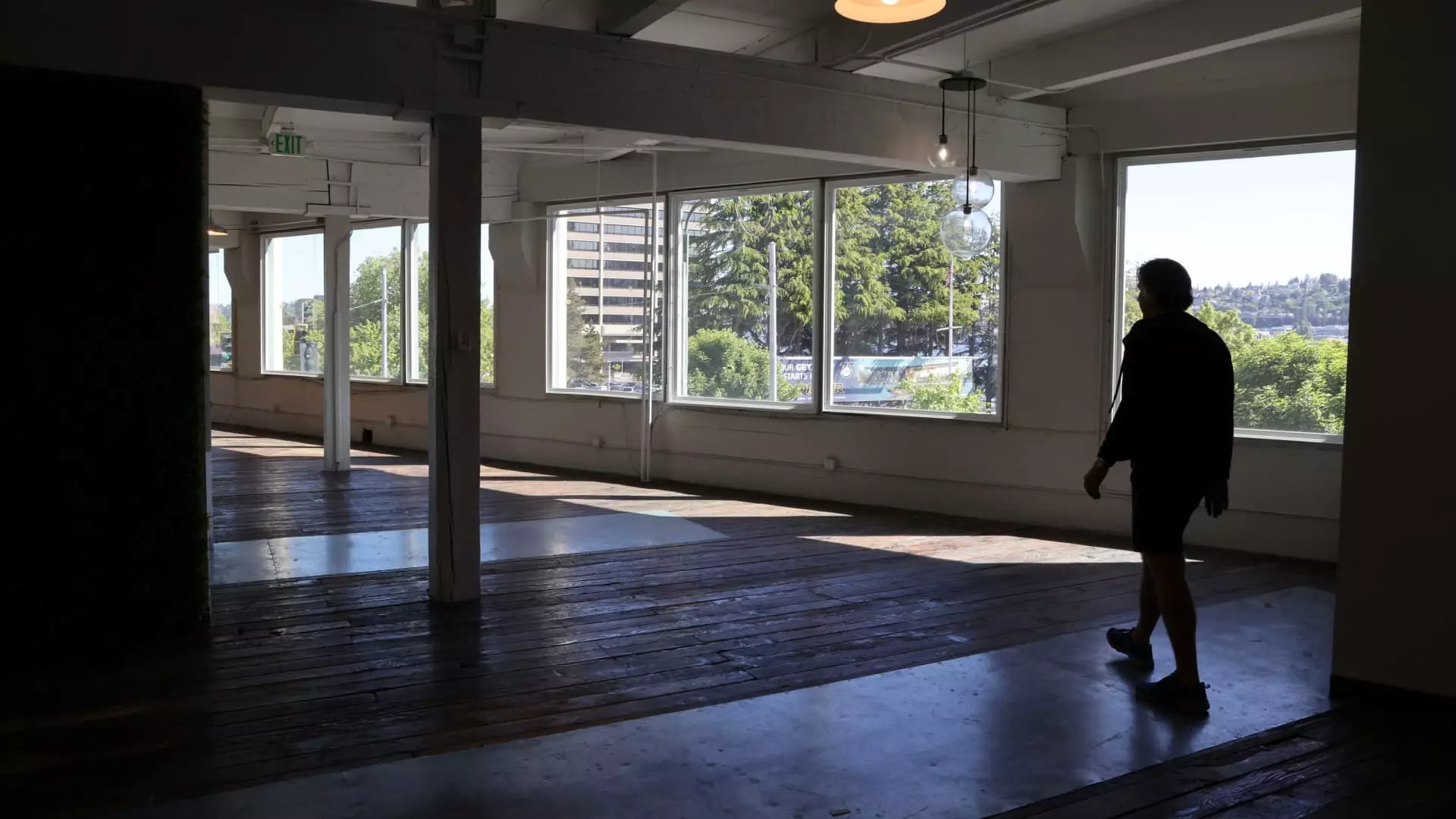The U.S. office market stands at a precarious crossroads, characterized by a startling reversal of fortunes. For the first time in over two decades, office conversions and demolitions are on track to surpass new constructions. This unprecedented shift signifies not just a trend but an essential recalibration of an industry long considered foundational. With a firm like CBRE Group unveiling stark numbers, it’s clear that the excessive supply of office space has led to a crisis of relevance in today’s economic landscape. The reality is jaw-dropping; 23.3 million square feet of office space is set to vanish, all while new constructions barely scrape 12.7 million square feet.
The gravity of this situation cannot be overstated. At a time when many sectors are rebounding from pandemic-induced chaos, the office real estate sector finds itself in dire straits. The overabundance of vacant office spaces, now hovering around a staggering 19%, serves as a testament to the deep-seated issues plaguing this market. This is not simply a temporary glitch; it reveals a troubling trend about the future of work and how traditional office settings are being eclipsed.
The Illusion of Recovery
While some optimistic voices proclaim a nascent recovery in the office market—highlighted by an 18% uptick in leasing activity—this optimism feels misplaced. The increase in demand is largely influenced by a tightening job market, where employees reluctantly return to offices, often out of necessity rather than desire. It is a painfully ironic twist that, as companies push for increased in-person attendance, they often overlook the fundamental shifts that have permanently changed the workplace ecosystem.
Net absorption figures, once a sign of health within the market, have recently flipped from negative to positive. However, one must question the sustainability of this uptick. Is it genuine growth, or merely a reactionary response to economic pressures? As remote work solidifies its place in corporate America, the risk lies in ignoring a crucial reality: the traditional office is increasingly becoming obsolete. A brief spike in leasing activity does not erase the cloud of economic uncertainty that has been looming since the pandemic.
Commercial Real Estate: A Double-Edged Sword
The potential upside of office demolitions and conversions presents a paradox. On one hand, the reduction of office space could theoretically stabilize rental prices. Yet, as Mike Watts from CBRE cautions, this modest improvement has hurdles to overcome. The ideal candidates for conversion are diminishing, and the skyrocketing costs related to construction and materials only serve to complicate an already fragile scenario.
The real estate investment trusts (REITs) benefiting from Class A spaces may bask in the glow of rising rents, but they tread a thin line. Those who refuse to swiftly adapt to the changing dynamics of workplace needs may find themselves in financial jeopardy. The long-term prosperity of these entities is uncertain, contingent upon whether they can pivot and embrace innovation rather than clinging to outmoded strategies that cater to an unyielding past.
The Neighborhood Impact: A New Dawn?
Interestingly, as the traditional office landscape undergoes transformation, neighborhoods might just stand to gain from these conversions. The shift towards repurposing office spaces into multifamily residences could inject new vibrancy into communities, reshaping urban landscapes. Between 2016 and now, this transition has reportedly yielded about 33,000 new housing units—an encouraging sign amid a backdrop of commercial decline.
Yet, one can’t help but question the broader implications. While revitalizing neighborhoods is noble, will it suffice to offset the loss of jobs that remained tethered to these office spaces? The balance between embracing a new urban reality while safeguarding traditional employment structures seems precarious at best. The path forward requires a nuanced approach: one that includes both adaptation and foresight.
In summation, the U.S. office market is not simply in a state of flux; it’s on the brink of a paradigm shift that requires immediate and thoughtful action. As buildings are repurposed or demolished, the old guard risks being left behind unless they evolve in tandem with the workforce they aim to attract. With so many unknowns on the horizon, one can only speculate how this transformation will ultimately shape our workplaces and communities in the years to come.


Leave a Reply